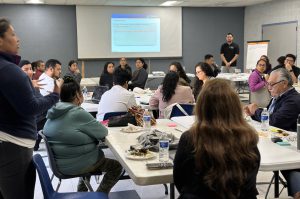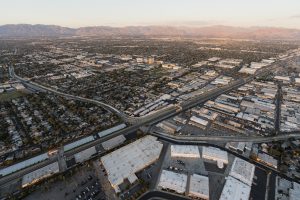
Advancing a Collaborative Agenda in Southeast LA
Advancing a Collaborative Agenda in Southeast LA In 2022, the California Community Foundation (CCF) launched the Regional Recovery Hub to strengthen place-based coordination in Los Angeles County
Variable Definitions:
Pesticide Use Percentile: The percentile of a given area’s exposure to pesticides from nearby agricultural fields compared to the rest of LA County
For more information on the California Office of Environmental Health Hazard Assessment’s methodology, visit the CalEnviroScreen homepage.
Source:
California Office of Environmental Health Hazard Assessment – CalEnviroScreen 2.0 (2014), CalEnviroScreen 3.0 (2017), CalEnviroScreen 4.0 (2021)
Years Available:
CalEnviroScreen 2.0:
Data collected from 2009-2011 and published in 2014
CalEnviroScreen 3.0:
Data collected from 2012-2014 and published in 2017
CalEnviroScreen 4.0:
Data collected from 2017-2019 and published in 2021
“High use of pesticides has been correlated with both exposure and acute pesticide-related illness, and there is evidence for an association with chronic disease outcomes. Some research indicates that proximity to agricultural fields is correlated with measured concentrations in homes (Bradman et al., 2007; Harnly et al., 2009). A study in California comparing farmworker homes to homes of low-income urban residents found indoor concentrations of an agricultural pesticide only in homes of farmworkers (Quiros-Alcala et al., 2011). Another study, based on data from the California Pesticide Use Report (PUR) database, found that nearby agricultural pesticide use was significantly associated with pesticide concentrations in carpet dust (Gunier et al., 2011)…Because of their physical and chemical characteristics, fumigants and other volatile pesticides are most likely to be involved in pesticide drift incidents and illnesses. However, any pesticide that is applied by air or sprayed during windy conditions can drift over neighboring communities (Coronado et al., 2011; Lee et al., 2011).”
Excerpt from CalEnviroScreen 4.0 Documentation
Citation:

Advancing a Collaborative Agenda in Southeast LA In 2022, the California Community Foundation (CCF) launched the Regional Recovery Hub to strengthen place-based coordination in Los Angeles County

In 2022, the California Community Foundation (CCF) launched the Regional Recovery Hub to strengthen place-based coordination in Los Angeles County regions that were most heavily impacted by
